Rampart and Dugout Canoe/Old and New School
The (very) old Wusterhausen school stood in front of the town church until 1906. In 1905 a new school building was erected on the ramparts, a brick building with a stepped gable. Behind it is the new school building, which was inaugurated in 1976. The Polytechnic High School ran up to the 10th grade and bore the name "John Scheer". In 1991 the primary school and comprehensive school were separated. Today there is the Astrid Lindgren Primary School for children up to the 6th grade, while the comprehensive school was closed in 2003.
Behind the new school there is still a remnant of the city wall with a bricked-up Gothic arch, through which the mill arm of the Dosse is said to have led to the Vierrademühle.
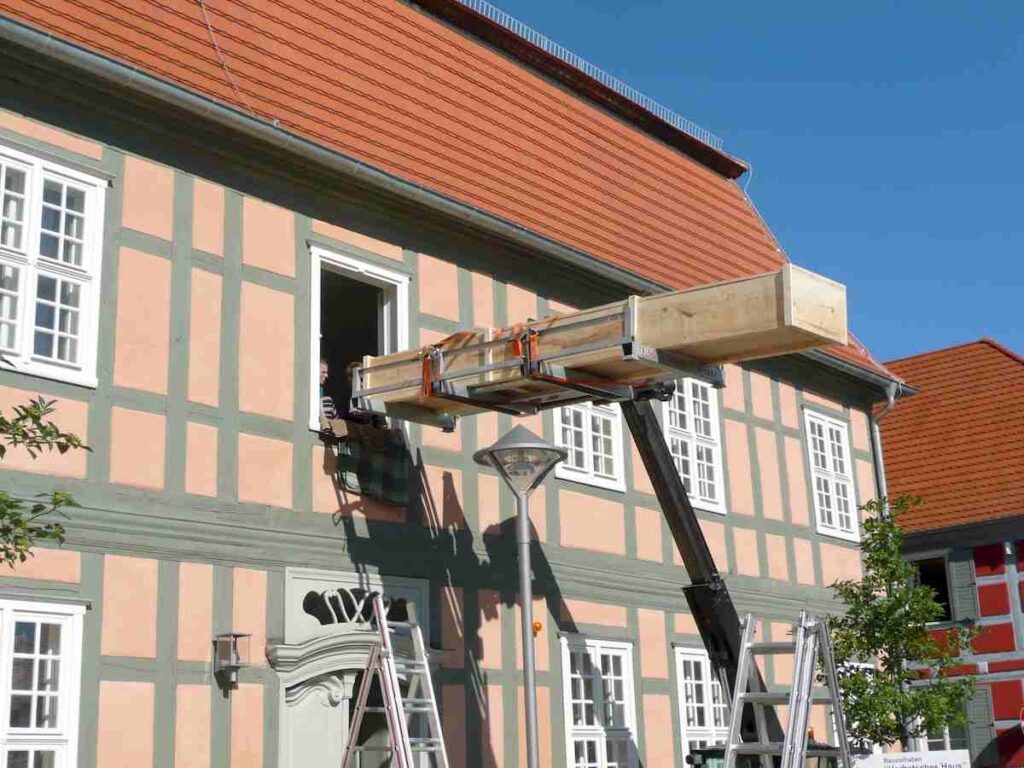
Transport of the dugout 2011
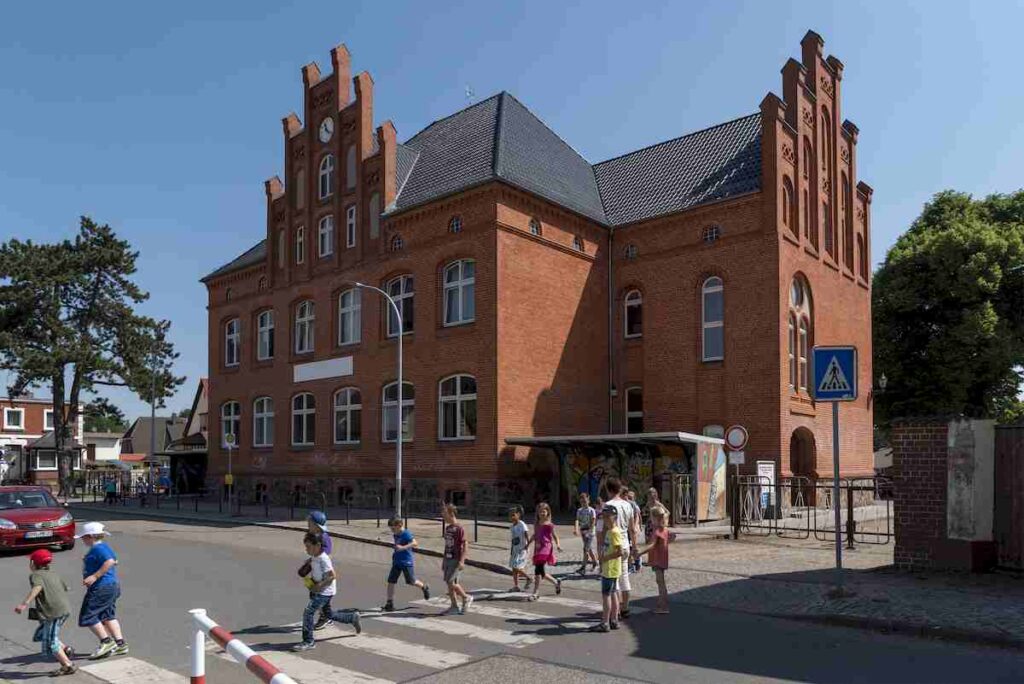
Old school, photo: Erik-Jan Ouwerkerk
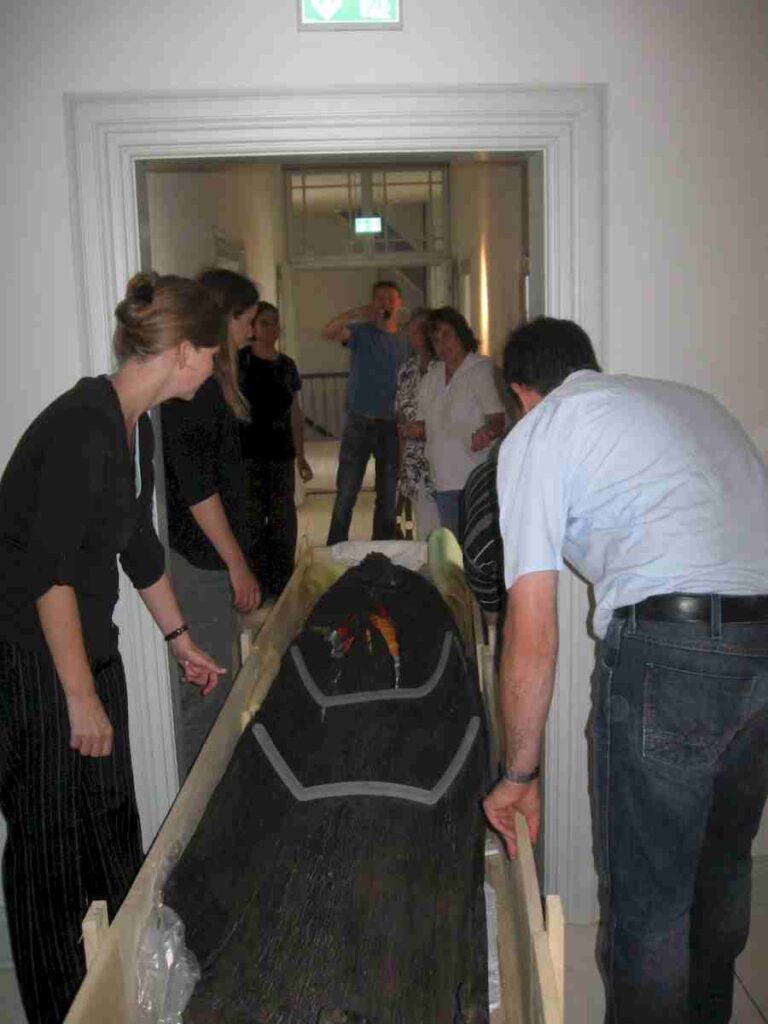
Thanks to a donation from the Sparkasse, the dugout canoe was restored for the permanent exhibition.
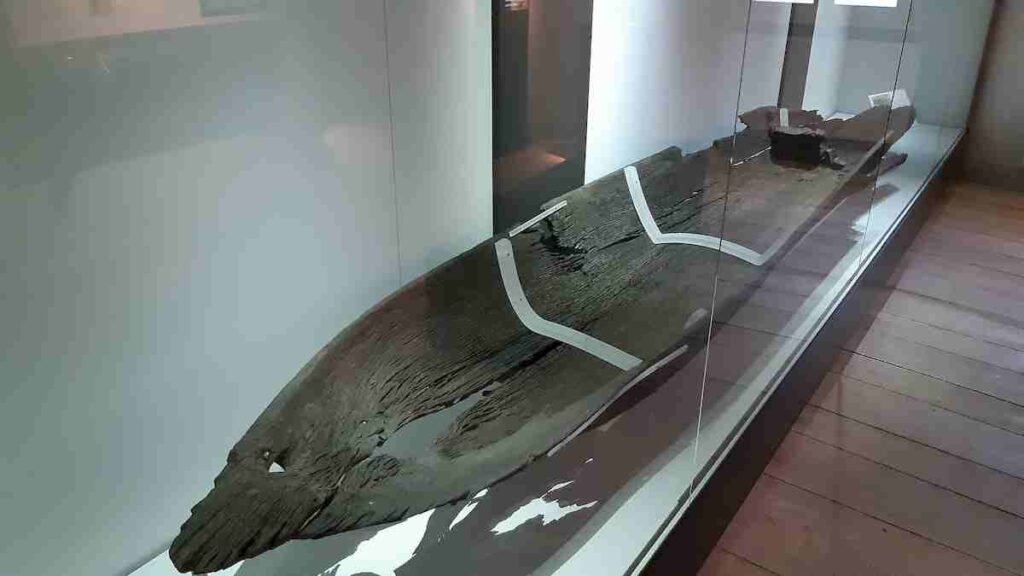
Dugout in the Way Museum
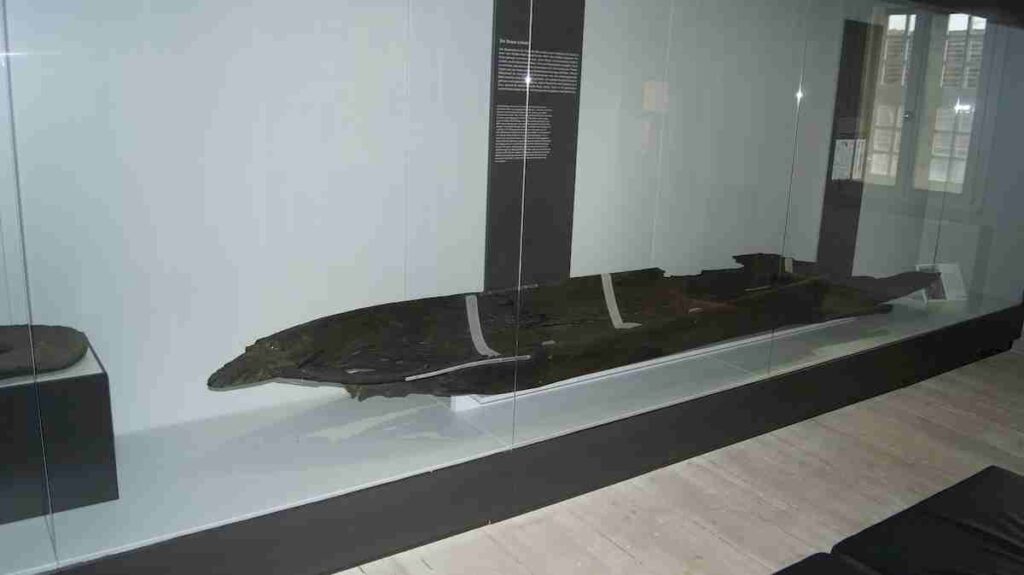
A tree.
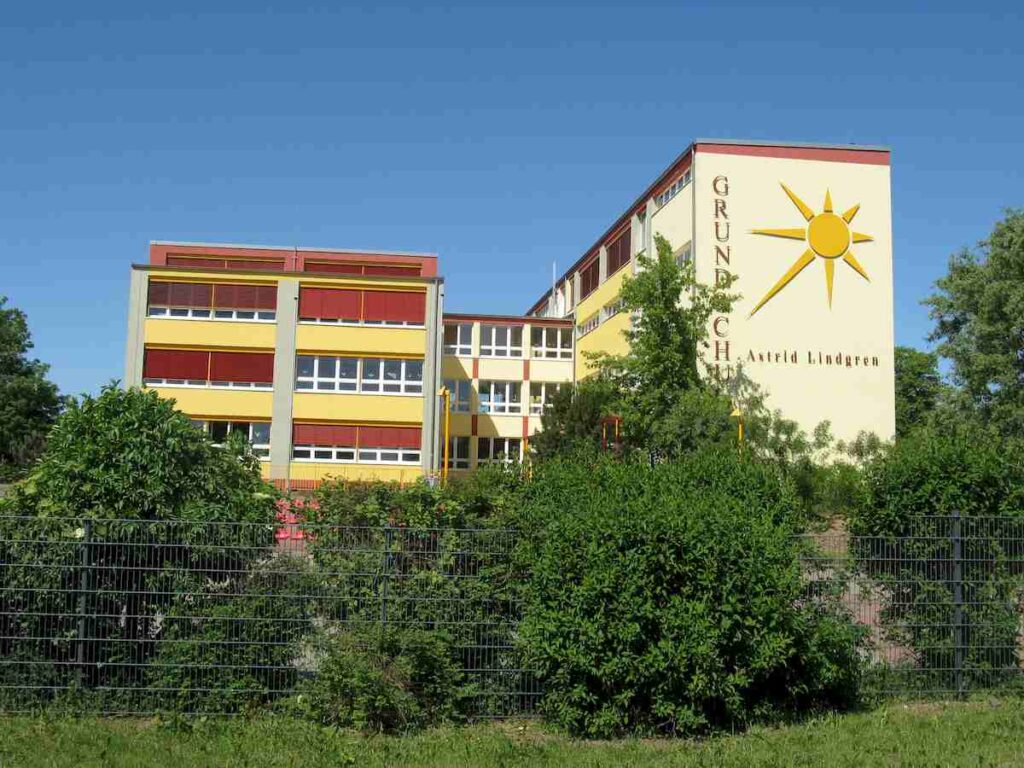
Astrid Lindgren Primary School, in the school building inaugurated in 1976, where the dugout was found during construction
Dugout canoe, around 1138, oak, found in Wusterhausen, Großer Burgwall (sponsorship Sparkasse Ostprignitz-Ruppin).
In 1974, during shaft work for the new school building in Wusterhausen, a 4.25 m long dugout canoe was found and salvaged - the oldest vehicle preserved from the city area. The stern was already damaged, but the boat was gradually dried and preserved to this day. Although the find came from the moat of the former Slavic castle rampart, the dugout was long thought to be much younger. Since 2009, dendrochronological studies have confirmed that the mighty oak was felled as early as 1138, ie shortly before the Wend Crusade and the conquest of the Slavic settlement areas by the Germans. Dugouts of this size (up to 10 m and more) were not only used for fishing, but also for transporting goods and people: they were important means of transport in impassable, wooded and swampy regions. In 2010, the Wusterhausen dugout was subjected to extensive conservational cleaning and careful surface strengthening.
Source: To the dugout VfGdP_ yearbook12.pdf - page 155 and 165, Kerstin Gessner and Annett Dittrich
“I am not yet in agreement with myself about the character of the castle wall and the so-called small castle wall”
This is what the Wusterhausen city chronicler Karl Altrichter wrote in 1887. Although he had numerous archaeological finds such as pottery shards, remains of bones and even fish scales available for inspection, he was unable to make an exact chronological assignment.
It was not until ten years later that the Berlin doctor and prehistorian Rudolf Virchow spoke of a medieval Slavic origin for the first time with the "pottery of the castle wall type". Since the 1960s, more and more Slavic finds from the north of the city have been registered. The area of the great ramparts with a diameter of around 200 meters has now been leveled and completely built on. Nevertheless, during various construction measures, it was possible to prove the fortification ditches of the former castle.
The finds testify to the long use of the Great Rampart by both the Slavs and the Germans. After the open, Slavic settlement in the later urban area of Wusterhausen was abandoned, the castle was fortified more strongly as a seat of power in the 11th century - integrated into a dense network of castles with lively communication and presumably also obligations to an alliance.
It was only five kilometers to the Unterseeinsel, a circular island castle in the middle of the lake, which can be reached quickly by horse and ferry. Messengers could reach Wulkow Castle on the Dosse or the castle hill in Wildberg after just half an hour's ride.
The Germans expanded the Slavic castle in Wusterhausen, in 1293 it is still mentioned as 'castrum'. It must have been abandoned soon after. In 1712 the city council released the completely overgrown castle grounds for use as garden land.
Slavic finds are also known from the so-called Kleiner Burgwall, but no fortification structures have been found so far. Here, too, the area has been systematically leveled, most recently in the 1960s to create a sports field.
Additional information
Archeology: Found when the school was being built, located directly below the school. Dugout in permanent exhibition.
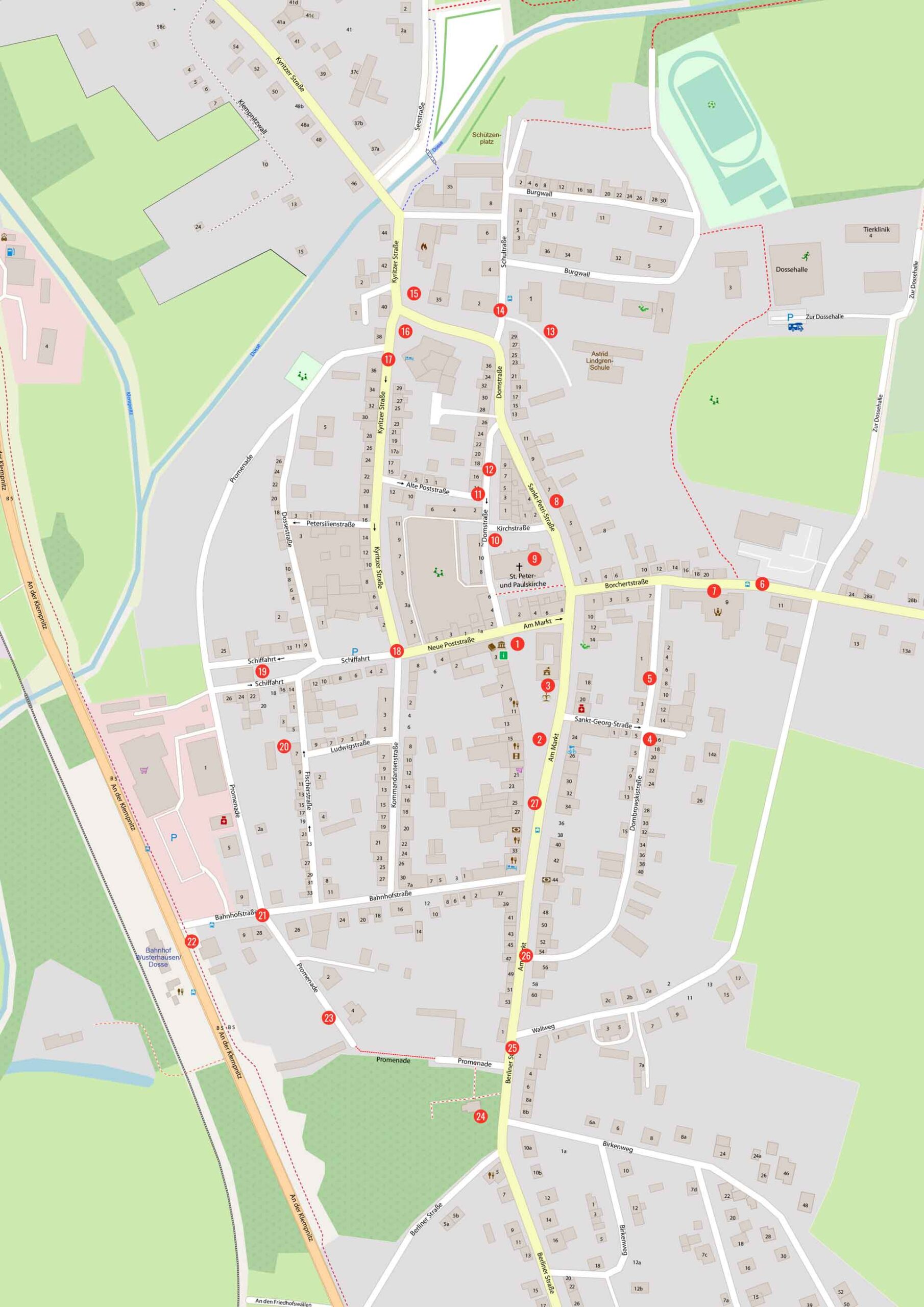
City walk map general view
